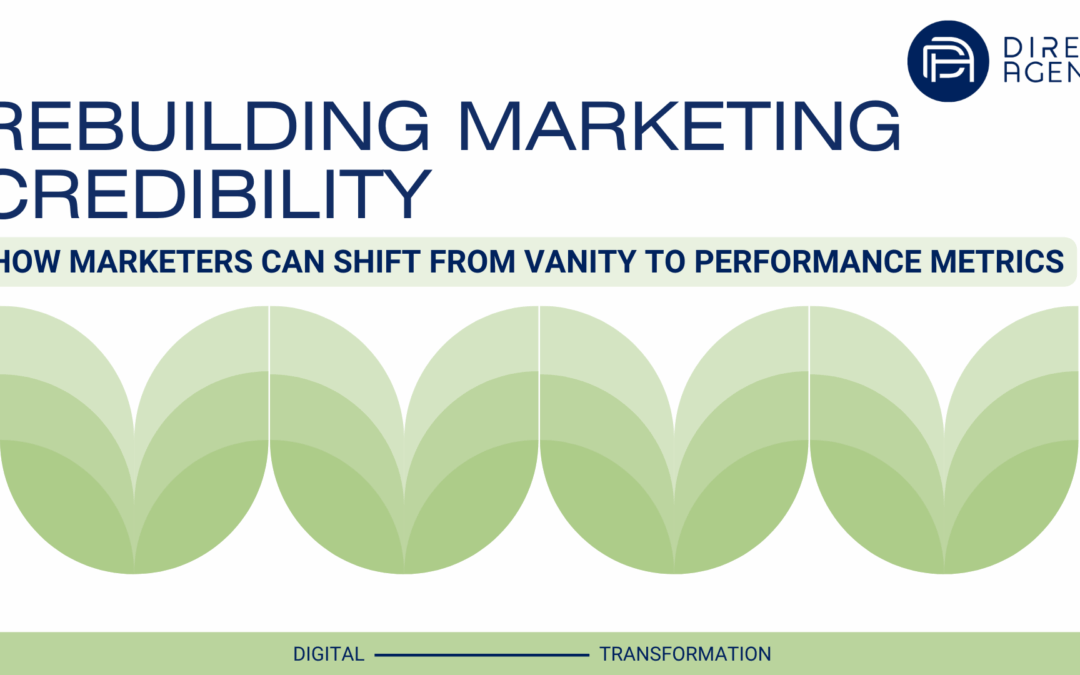For years, marketers have leaned on numbers that look good in a report but don’t always prove business impact. Clicks, impressions, likes, and engagement rates are easy to track and easy to celebrate, but when the question becomes “how is this driving growth?” Those numbers often fall short.
This reliance on vanity metrics has made it harder for marketers to earn trust across their organizations. Teams might celebrate a viral post or a spike in engagement, but when budgets get questioned or campaign effectiveness comes under review, surface level wins don’t hold up. Leadership is looking for proof that marketing is contributing to pipeline, revenue, and long-term customer growth.
The solution isn’t a flashier dashboard or more sophisticated reporting software. What restores credibility is a shift toward performance metrics that connect marketing activity to meaningful business outcomes.
The Hidden Cost of Measurement
Vanity metrics can create the illusion of momentum but rarely show the full impact of marketing efforts. Engagement numbers are helpful for understanding whether creative is resonating, yet they don’t always lead to conversions or revenue. When reporting focuses too heavily on these surface signals, marketing risks being seen as disconnected from broader business objectives.
The effects play out quickly for marketers. Budgets get cut, new initiatives stall, and campaign approvals take longer. Teams spend hours optimizing ads for engagement without a clear link to sales, while competitors who prioritize impact-driven measurement pull ahead. This cycle creates wasted effort, misaligned priorities, and missed opportunities to prove marketing’s value.
Marketing Metrics That Build Credibility
Shifting from vanity metrics to performance metrics requires a systematic approach. The first step is to audit your current reports and identify where the numbers stop short of showing business impact. This exercise helps determine which vanity metrics can be de-emphasized and where stronger connections to pipeline or revenue need to be built.
From there, implementing attribution models that capture the customer journey becomes essential. Today’s platforms can link campaign activity to outcomes in ways that make resource allocation more precise and decision-making more data-driven. These insights don’t just prove value; they guide marketers toward smarter investments.
Close collaboration with sales is another critical piece. Agreeing on definitions of qualified leads, aligning on pipeline goals, and regularly reviewing performance together ensures that marketing reports reflect business realities. The more marketing can show its contribution to sales outcomes, the stronger its credibility will become.
Finally, testing and optimization should be grounded in revenue, not just engagement. A/B testing creative, offers, and channels with revenue outcomes as the measure of success ensures that campaigns are being refined with business growth in mind. This shift creates a culture of experimentation that balances creativity with accountability.
Building Your Performance-Focused Marketing Framework
Shifting from vanity metrics to performance metrics requires a systematic approach. The first step is to audit your current reports and identify where the numbers stop short of showing business impact. This exercise helps determine which vanity metrics can be de-emphasized and where stronger connections to pipeline or revenue need to be built.
From there, implementing attribution models that capture the customer journey becomes essential. Today’s platforms can link campaign activity to outcomes in ways that make resource allocation more precise and decision-making more data-driven. These insights don’t just prove value; they guide marketers toward smarter investments.
Close collaboration with sales is another critical piece. Agreeing on definitions of qualified leads, aligning on pipeline goals, and regularly reviewing performance together ensures that marketing reports reflect business realities. The more marketing can show its contribution to sales outcomes, the stronger its credibility will become.
Finally, testing and optimization should be grounded in revenue, not just engagement. A/B testing creative, offers, and channels with revenue outcomes as the measure of success ensures that campaigns are being refined with business growth in mind. This shift creates a culture of experimentation that balances creativity with accountability.
Reclaiming Marketing’s Strategic Value
Marketing teams do far more than generate clicks or social engagement they drive business growth. But proving that impact depends on the ability to measure what matters. Marketers who shift their focus from vanity to performance metrics gain the credibility needed to protect budgets, influence strategy, and secure their place as growth drivers within their organizations.
The path is straightforward: demonstrate real outcomes, align with business goals, and build measurement practices that go deeper than surface level wins. By doing so, marketers can reclaim their role as essential contributors to long-term success.
Contact [email protected] to learn how our team can help you move beyond vanity metrics and prove marketing’s impact on growth.

